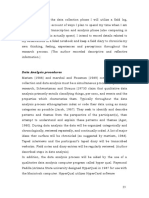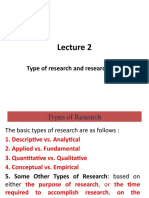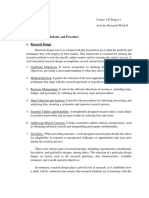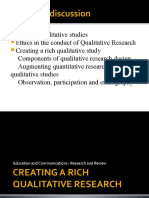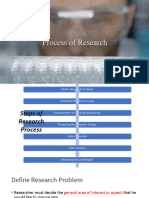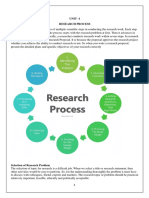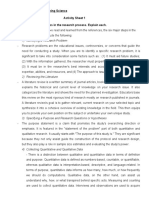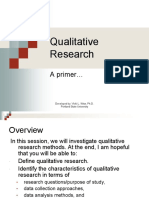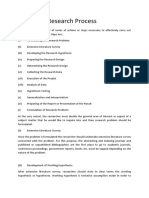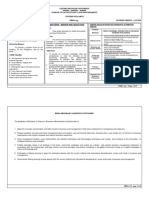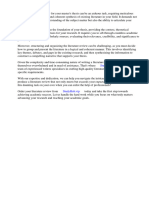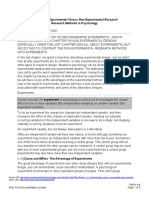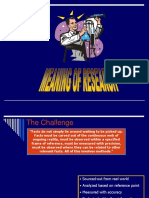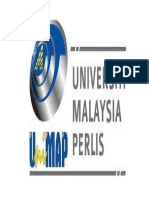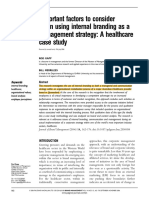Research Process
In order to provide a legitimate research result, the following procedures must be
followed when doing research:
Conceptualization Phase:
The conceptualization phase is the initial phase of research which involves the
intellectual process of reviewing the related literature, formulation of hypothesis and
hypothesis formulation.
The review of literature will aid in determining the study's theoretical or
conceptual framework. The theoretical framework guides the study's design and allows
the findings to be applied to other groups and circumstances not included in the study
(Polit & Beck, 2009). Theoretical frameworks identify study variables, propose
relationships to be tested, and might lead the intervention strategy for an experimental
study. They can be implicit or explicit (Polit & Beck, 2004).
A research hypothesis is similar to a prediction statement, and it is the statement
made by a researcher while speculating on the outcome of his or her study. In the
preceding section, research difficulties and questions were formulated in a study.
However, as statements, they are far too broad and untestable by any credible scientific
method.
Next, create a research problem. The researcher should ask himself or herself the
following questions when developing a research problem: is it fascinating to you? Is this
a viable option? What are the study's chances of contributing new information? What is
the study's real-world application? After the researcher has a good understanding of
what his or her research challenge is, he or she must come up with a title for the study.
The research title must be qualitative, and it should be a full explanation of your
primary hypothesis, which should be created before beginning the study. A good title
should be long enough to be descriptive but short enough to be memorable, usually no
more than 14 words in length. Please bear in mind that while creating a title, you should
make it more comprehensible so that the main problem may be identified quickly. At
least one research problem is required while formulating. The researcher must be able to
discern between the important and minor issues. In a broad sense, the major problem is
�the central theme of your research, and it might be expressed as a statement or a
question. After you've discovered the overall issue, break it down into 3-4 particular
issues that may be expressed in both statement and question form.
Designing Phase:
The researcher plans the study's techniques to efficiently examine and address the
problem during the designing phase. This phase involves the following: methods and
techniques of the study, data gathering procedures, ethical compliance, instrumentation
and respondents.
The major research strategy used for the study is described under the study's
methodology and procedures. It also contains references to sources in the literature that
employed methods and procedures comparable to those used in the current study. This
is also where we decide the research design to employ for the study.
The portion of the research paper where a researcher includes inclusion and
exclusion criteria for respondent participation is known as the respondents of the study.
It's also where you'll find information on participant characteristics like age and gender,
as well as crucial demographic and study-related information.
The study's instruments detail the formal features of the instrument, such as the
number of items, components, scoring systems, and interview protocols. It also covers
any type of paperwork used to collect information from research participants.
The data gathering procedure is the stage in which the researcher reveals the
study's specific methodology. This is where the researcher will comprehensively discuss
all the procedure included in the study.
Empirical Phase:
The researcher employs the methodology developed during the designing phase in
empirical phase. This step entails putting the data collection techniques laid forth in the
designing phase into action while being ethically compliant. This section includes the
tests with which qualitative data will be analyzed.
Analysis Phase:
� The researcher formulates conclusions and interpretations based on the data
acquired in this phase. It entails data interpretation and analysis, as well as conclusions
and recommendations. In any research, the analytic and empirical phases are tightly
linked. The data is readied for analysis after it has been gathered. To ease data analysis,
quantitative data is generally put into a statistical software program, while qualitative
material is frequently transcribed verbatim. There are a variety of software packages
available to help in qualitative data analysis. To assure the correctness of this process,
procedures must be in place.
Dissemination Phase:
The preparation of research reports is the final step in the research process, and it
is used to disseminate results to the right audience. Dissemination reports should be
peer-reviewed by independent peers in the same area of research who have not engaged
in the study's conduct, just as they should be for a final research plan. The peer review
procedure will assure objectivity and enhance the chances of a valid and accurate
report.























